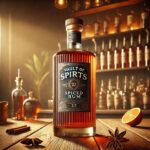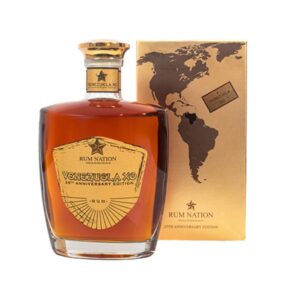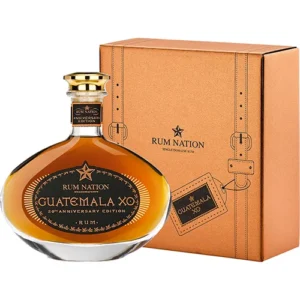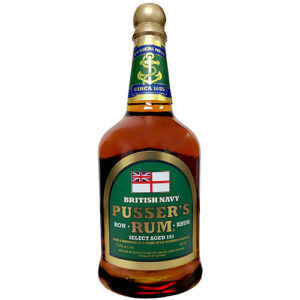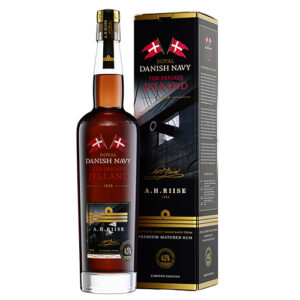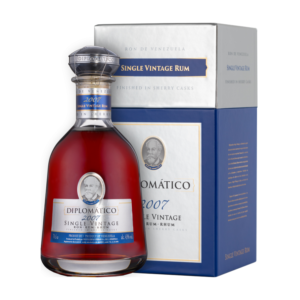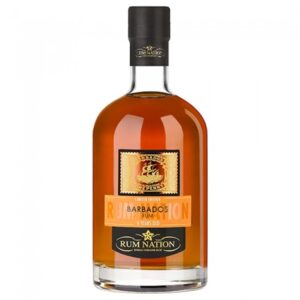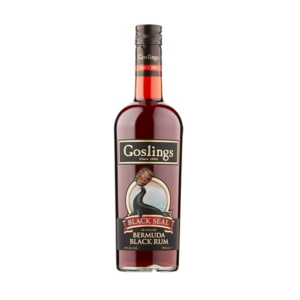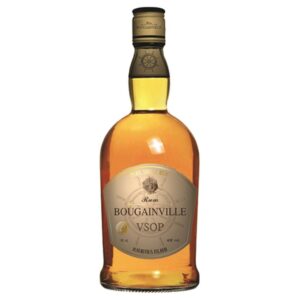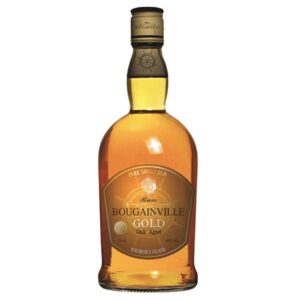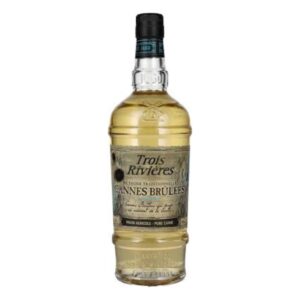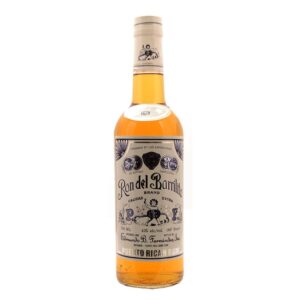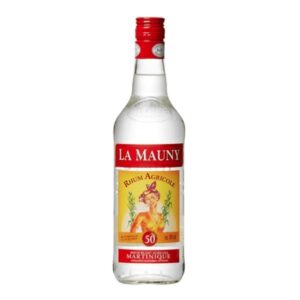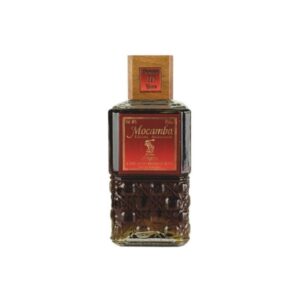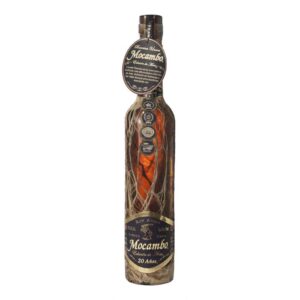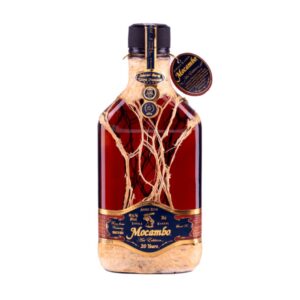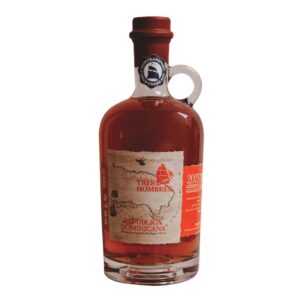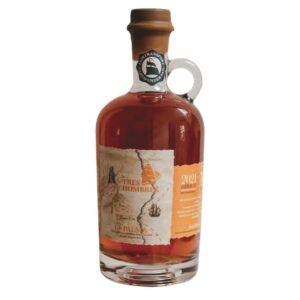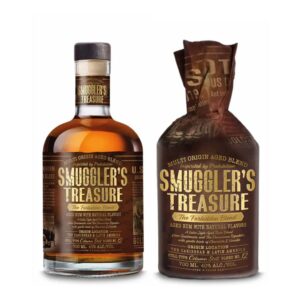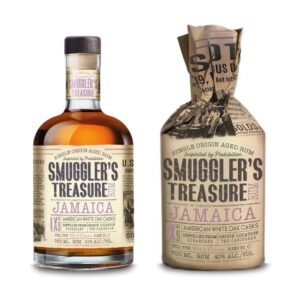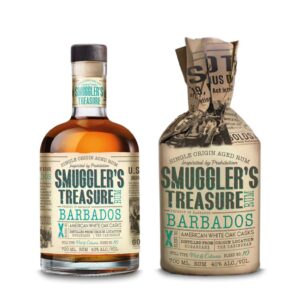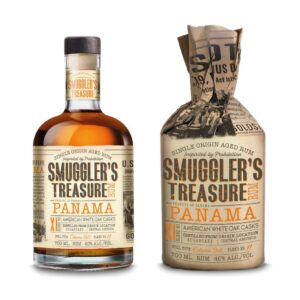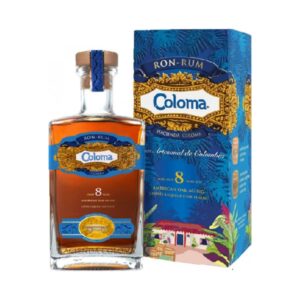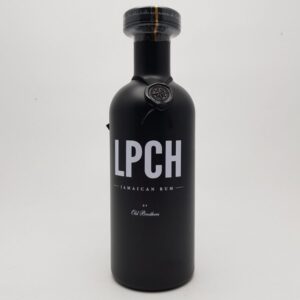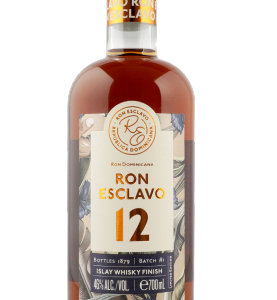Showing 1–24 of 267 resultsSorted by popularity
Rum Spirits – The Complete Guide
TL;DR: In Brief
- Rum is characterized by its sweet, complex profile derived from sugarcane
- Produced primarily from sugarcane byproducts and defined by fermentation and distillation processes
- Found in several styles, including white/silver, gold/amber, dark/black, and aged/premium
- Best enjoyed neat, on ice, or in classic cocktails like the Daiquiri, Mojito, or Mai Tai
Disclaimer: This guide is intended for informational purposes for adults over 18 years of age. Vault of Spirits encourages responsible alcohol consumption.
Introduction to Rum
Rum has a rich history and fascinating craftsmanship behind it. From its origins in the Caribbean to its global popularity today, this spirit has evolved to become one of the world’s most treasured.
This guide provides insight into the production, flavor notes, and enjoyment of rum, whether you’re a beginner or seasoned enthusiast.
With its versatility spanning from clear mixing rums to complex aged sipping spirits, rum offers a remarkable journey through flavors, cultures, and traditions.
How Did Rum Originate?
From Past to Present
Rum’s birth is inextricably linked to sugarcane cultivation and the dark period of colonial expansion and slavery in the Caribbean during the 17th century.
The earliest documented rum production occurred around the 1620s in the Caribbean, particularly in Barbados, when plantation workers discovered that molasses, a byproduct of sugar refining, could be fermented into alcohol.
This “kill-devil” or “rumbullion” – early names for the spirit – quickly gained popularity among sailors and colonists, evolving from a rough drink into a refined spirit as distillation techniques improved.
Which Historical Milestones Shaped Rum?
The British Royal Navy’s adoption of rum as a daily ration in 1655 proved pivotal for the spirit’s spread and reputation.
During the American colonial period, rum became an essential trade commodity, with New England distillers establishing a thriving industry.
Prohibition in the 1920s severely damaged rum’s market position in the United States, but the “Tiki” culture of the mid-20th century revitalized interest in rum cocktails.
In recent decades, premium and artisanal rum has experienced a renaissance, with connoisseurs recognizing its complexity on par with fine whisky or cognac.
How Has Rum Influenced Cultural Traditions?
In the Caribbean, rum remains deeply interwoven with local customs, celebrations, and daily life.
Many island nations consider rum their national spirit, with distilleries becoming important cultural landmarks and sources of national pride.
Traditional ceremonies in countries like Jamaica and Haiti often incorporate rum as offerings or libations.
Rum’s connection to maritime history has cemented its place in naval traditions worldwide, with ceremonies and celebrations still featuring rum toasts.
Why Is Rum Popular Today?
Rum’s versatility makes it appealing to a wide audience – it works beautifully in cocktails while premium varieties offer complex sipping experiences.
The craft spirits movement has spotlighted artisanal rum production, with small-batch distillers exploring traditional methods and innovative approaches.
Rum’s natural sweetness provides an accessible entry point for those new to spirits.
The tiki revival and tropical cocktail renaissance have placed rum at the center of contemporary cocktail culture.
How Is Rum Made?
Which Raw Materials Are Used in Production?
Rum’s production begins with sugarcane derivatives, with different bases creating distinct rum styles.
Primary ingredients:
- Molasses – The most common base for rum, this thick, dark byproduct of sugar refining contributes deep caramel and toffee notes
- Sugarcane juice – Used primarily in rhum agricole, providing grassier, more vegetal flavors than molasses-based rums
- Sugarcane syrup – A concentrated form of sugarcane juice sometimes used in premium rum production for a cleaner, more aromatic base
How Does the Fermentation Process Work?
Fermentation transforms sugar into alcohol through yeast activity, with significant variation across rum styles.
While some distilleries use carefully cultivated yeast strains for consistent results, others rely on wild, ambient yeasts that create more unpredictable but often complex flavor profiles.
Fermentation periods range dramatically – from just 24 hours for lighter rums to two weeks or longer for fuller-bodied styles.
The longer and slower the fermentation, the more congeners (flavor compounds) develop, creating more complex rums with stronger character.
Which Distillation Techniques Are Used?
Distillation concentrates alcohol and selects which flavor compounds from fermentation remain in the final spirit.
Common distillation methods:
- Pot still distillation – Traditional method producing heavier, more flavorful rums with fuller bodies and pronounced character
- Column still distillation – Modern approach creating lighter, cleaner rums often used in mixing, allowing for higher proof and greater consistency
- Hybrid approaches – Many producers combine both methods, blending pot still character with column still efficiency
What Is the Significance of Aging?
Aging transforms raw rum distillate into a smooth, complex spirit through interaction with wood.
Most premium rums age in oak barrels, often ex-bourbon casks, which impart vanilla, caramel, and spice notes.
Tropical aging accelerates the maturation process – one year in the Caribbean is often considered equivalent to three years in cooler climates due to higher temperatures and humidity.
Many distillers employ a solera system, blending rums of different ages to create consistent flavor profiles year after year.
Which Regions Are Known for Rum?
Where Are the Best Varieties Produced?
The Caribbean remains rum’s spiritual homeland, with each island developing distinctive styles.
Jamaica is renowned for funky, ester-rich rums with intense tropical fruit notes and a style known as “hogo.”
Barbados produces balanced, approachable rums that often show exceptional refinement and elegance.
Martinique specializes in Rhum Agricole, made from fresh sugarcane juice rather than molasses, with protected AOC status.
Central and South American countries like Guatemala, Venezuela, and Panama produce characteristically smooth, well-aged rums with Spanish-influenced methods.
How Do Geography and Climate Affect the Flavor?
Tropical climates accelerate aging, with higher temperatures driving more interaction between rum and barrel.
Coastal production areas may impart subtle salinity to rums through air exposure during aging.
Local water sources contribute to regional character, with limestone-filtered water often prized for fermentation.
Traditional open-air fermentation captures ambient yeasts unique to each location, creating “terroir” in rum production.
What New Trends Are Emerging in Rum Production?
Craft distillers are reviving historical production methods, including pot still distillation and longer fermentations.
Terroir-focused rums highlight single-estate sugarcane and location-specific production elements.
Innovative cask finishes using wine, sherry, port, and even other spirits barrels create new flavor dimensions.
Transparency in production methods and age statements is increasing as consumers demand more information.
What Do the Different Quality Designations Mean?
Unlike scotch or cognac, rum lacks a universal classification system, with each producing region setting its own standards.
Age statements typically refer to the youngest rum in the blend, though practices vary by country.
Common terms include “añejo” (aged), “extra añejo” (extra aged), and “solera” (blended using the solera method).
Some regions, like Martinique, have protected designations (AOC) that strictly regulate production methods and quality.
How Does Rum Taste?
What Characterizes the Typical Flavor Profile?
Rum offers extraordinary diversity, but most expressions share a foundation of natural sweetness with varying levels of complexity.
Typical aromas:
- Sweet notes – Caramel, vanilla, toffee, butterscotch, honey, tropical fruits
- Spice elements – Cinnamon, nutmeg, clove, black pepper, ginger
- Complex notes – Oak, leather, tobacco, coffee, chocolate, tropical flowers
How Does the Flavor Vary Between Different Styles?
White/silver rums typically offer crisp, clean profiles with subtle sweetness and light vanilla notes, ideal for cocktails.
Gold/amber rums present more caramel, vanilla, and moderate oak influence with a rounder mouthfeel.
Dark/black rums feature rich molasses, dried fruits, brown sugar, and robust spice notes with considerable depth.
Agricole rums stand apart with grassy, vegetal characteristics, olive notes, and terroir-driven complexity.
How Does the Flavor Develop with Age?
Young rums often display sharp alcohol notes and primary sugar characteristics.
Mid-aged rums (3-8 years) develop balance, with wood influence integrating with base spirit character.
Well-aged rums (8+ years) showcase complexity, with dried fruit notes, tobacco, leather, and integrated spice.
Very old rums (15+ years) may develop exceptional depth, with rancio qualities similar to cognac and increased concentration of flavors.
What Signs Reveal High Quality?
Premium rums show balance between sweetness, alcohol, and flavor complexity without any single element dominating.
A long, evolving finish indicates quality, with flavors that develop and change rather than quickly disappearing.
Smooth texture without harsh alcohol burn, even at higher proofs, suggests careful distillation and proper aging.
Transparency regarding additives (or lack thereof), as many commercial rums contain added sugar and flavorings.
How Is Rum Best Enjoyed?
What Is the Optimal Serving Method?
Light and mixing rums work beautifully in cocktails, where their clean profiles provide structure without overwhelming other ingredients.
Aged and premium rums deserve to be sipped neat or with minimal dilution to appreciate their complexity.
A small splash of water can open up flavor compounds in higher-proof rums, revealing hidden nuances.
While traditionalists prefer neat pours, serving on a large ice cube can be refreshing while maintaining essential character.
Which Glass and Temperature Is Ideal?
A tulip-shaped glass concentrates aromas for neat sipping, similar to a Glencairn whisky glass.
Traditional rum tasting glasses often feature slightly wider bowls than whisky glasses to accommodate rum’s expansive aromatics.
Serve sipping rums slightly below room temperature (60-65°F/15-18°C) for optimal flavor release.
Cocktail glassware should match the specific drink, from tall Collins glasses for refreshing mixed drinks to coupes for elegant classics.
How Do You Taste Like an Expert?
Begin with visual assessment, noting color and viscosity which can indicate age and body.
Nose gently and repeatedly, first from a distance then closer to the glass, identifying primary, secondary, and tertiary aromas.
Taste with a small sip, letting the rum coat your entire palate before swallowing or spitting.
Evaluate the finish – its length, evolution, and the final impressions it leaves – which often indicates overall quality.
Which Dishes Complement Rum?
Light rums pair wonderfully with seafood, particularly in citrus-based marinades and ceviches.
Aged rums complement chocolate desserts, with their caramel notes enhancing cocoa’s richness.
Spiced rums naturally accompany holiday desserts featuring similar flavor profiles – think gingerbread or fruit cake.
Dark, rich rums stand up to barbecued meats, with their robust character matching smoky, caramelized flavors.
Which Cocktails Can Be Made with Rum?
Which Classic Cocktails Should You Know?
Daiquiri
- Ingredients: White rum, fresh lime juice, simple syrup
- Preparation: Shake with ice and strain into a chilled coupe glass
- History: Created in Cuba around 1898, named after a local beach and mine
Mojito
- Ingredients: White rum, fresh lime juice, mint leaves, sugar, soda water
- Preparation: Muddle mint with sugar and lime, add rum, ice, and top with soda
- History: Originated in Cuba with roots tracing back to the 16th century medicinal drink “El Draque”
Mai Tai
- Ingredients: Aged rum, orange curaçao, orgeat syrup, lime juice
- Preparation: Shake with crushed ice and pour unstrained into a double old-fashioned glass
- History: Created by Victor “Trader Vic” Bergeron in 1944, meaning “the best” in Tahitian
Which Modern Cocktails Are Worth Trying?
Jungle Bird – A bittersweet tropical classic revived in the modern era, combining dark rum with Campari, pineapple juice, lime, and sugar.
Kingston Negroni – A rum twist on the classic Negroni, using Jamaican rum in place of gin, with Campari and sweet vermouth.
Rum Old Fashioned – Aged rum with a touch of sugar, aromatic bitters, and an expressed orange peel creates a sophisticated alternative to the whiskey version.
Rum Manhattan – Premium aged rum, sweet vermouth, and bitters offer a tropical interpretation of the classic cocktail.
How Is Rum Enjoyed Neat?
Premium aged rums shine when served neat in an appropriate tasting glass, allowing full appreciation of their complexity.
Dark rums often benefit from 5-10 minutes of rest after pouring, allowing volatile compounds to settle.
Overproof rums (above 50% ABV) can be tamed with a few drops of water to release hidden flavors.
In tropical regions, rum is often enjoyed with a single large ice cube to combat heat while minimizing dilution.
Which Homemade Variants Can You Experiment With?
Infused rums offer creative possibilities – try adding vanilla beans, cinnamon sticks, or fresh tropical fruits to white rum.
Homemade spiced rum allows customization of spice levels and profiles beyond commercial offerings.
Rum blending experiments can create unique house blends by combining different styles and origins.
Aged cocktails – barrel-age your favorite rum cocktails in small oak barrels for harmonized flavors.
What Should You Know Before Buying Rum?
Which Details Should You Pay Attention to When Buying?
Look for transparency regarding age statements, distillation methods, and additives.
Check the actual ABV (alcohol by volume) – quality rums are rarely bottled below 40%.
Research the producer’s reputation and history, as established distilleries often maintain consistent quality.
Be wary of excessive sweetness in some commercial offerings, which may indicate added sugar to mask production flaws.
What Do You Get for Your Money in Different Price Ranges?
Entry-level ($15-25): Serviceable mixing rums with clean profiles but limited complexity.
Mid-range ($25-50): Quality aged rums suitable for both cocktails and occasional sipping.
Premium ($50-100): Well-aged expressions with significant complexity and depth, primarily for sipping.
Ultra-premium ($100+): Exceptional, often limited-edition rums with extraordinary complexity, rarity, or significant age.
How Is Rum Properly Stored?
Unlike wine, spirits don’t continue to age or improve in the bottle once sealed.
Store bottles upright to prevent cork deterioration from constant contact with high-proof spirit.
Keep away from direct sunlight and temperature fluctuations to preserve delicate aromas.
Once opened, rum will gradually oxidize – consider transferring partially consumed bottles to smaller containers to reduce air exposure.
Is Rum a Good Investment?
Limited edition releases from prestigious distilleries can appreciate in value, particularly vintage bottlings.
Discontinued expressions from historic distilleries often see significant value increases over time.
The investment market for rum remains less developed than whisky, potentially offering growth opportunities.
Focus on provenance, rarity, and producer reputation when considering investment-grade purchases.
Which Brands Do We Recommend?
What’s Best for Beginners?
Appleton Estate Signature Blend offers an excellent introduction to Jamaican rum with approachable complexity.
Plantation 3 Stars combines rums from several Caribbean islands, providing an accessible entry to white rum.
Diplomatico Reserva Exclusiva presents a sweet, approachable profile that many find immediately appealing.
Mount Gay Eclipse delivers classic Barbadian character at an affordable price point.
What Will Impress Enthusiasts?
Foursquare’s exceptional limited releases showcase pure, additive-free Barbadian rum with masterful aging.
Hampden Estate offers funky, high-ester Jamaican rums with extraordinary tropical fruit complexity.
Rhum J.M brings authentic Martinique Rhum Agricole with terroir-driven character and exceptional balance.
Appleton Estate 21 Year demonstrates Jamaica’s capability for extraordinarily well-aged expressions.
Which Bottles Are Most Sought After?
Black Tot Last Consignment contains the final reserves of British Royal Navy rum, bottled when the daily rum ration ended in 1970.
Havana Club Máximo Extra Añejo represents the pinnacle of Cuban rum craftsmanship, blended from centuries-old reserves.
Vintage Caroni bottles from the now-closed Trinidad distillery command extraordinary prices among collectors.
Appleton Estate Hearts Collection features ultra-rare, extremely limited edition bottlings of exceptional age.
Where Do You Get the Most Value for Money?
Doorly’s XO offers exceptional Barbadian quality at a surprisingly accessible price point.
Smith & Cross provides authentic, high-proof Jamaican funk that outperforms many pricier alternatives.
El Dorado 12 Year delivers remarkable depth and complexity from Guyana at a mid-range price.
Plantation OFTD combines rums from several prestigious distilleries into an overproof blend that punches well above its price.
Frequently Asked Questions
What Is Rum?
Rum is a distilled alcoholic beverage made from sugarcane byproducts such as molasses or fresh sugarcane juice.
It’s typically aged in oak barrels after distillation, though unaged varieties exist.
The spirit is produced primarily in the Caribbean and Latin America, though rum production has spread worldwide.
How Is Rum Produced?
Production begins with fermenting sugarcane derivatives (usually molasses or cane juice) with water and yeast.
This fermented liquid is then distilled, either in pot stills for fuller-flavored rums or column stills for lighter styles.
Most rums are aged in oak barrels, typically ex-bourbon casks, though some are bottled unaged.
Many producers blend rums of different ages and styles to create their final product.
What Characterizes Rum?
Rum is characterized by its natural sweetness derived from sugarcane, with flavors ranging from light and crisp to rich and complex.
Tremendous diversity exists within the category, from clear mixing rums to dark, richly flavored sipping expressions.
The spirit often features notes of caramel, vanilla, tropical fruits, and baking spices, with aged versions developing oak, tobacco, and leather characteristics.
Where Can You Buy Rum?
Quality rum selections can be found at well-stocked liquor stores, with specialty retailers offering wider ranges of premium and craft options.
Online retailers provide access to rare and specialty rums, though shipping regulations vary by location.
Duty-free shops in the Caribbean often feature exclusive bottlings and local expressions difficult to find elsewhere.
Specialty rum bars sometimes sell bottles from their collections, offering expert guidance on selections.



